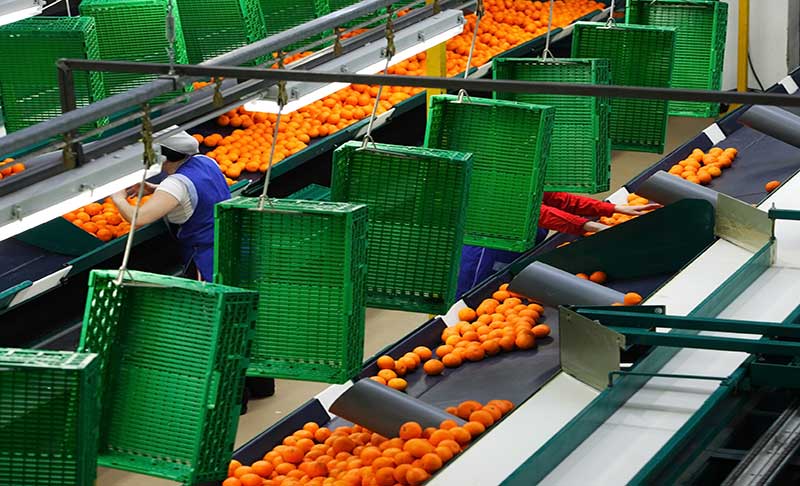Our technology can be successfully applied to the production of sauces or concentrates, obtaining significant savings in terms of energy used and evident advantages in terms of homogenization, stabilization and sterilization of the product.
It cannot currently be used for the production of peeled tomatoes. Obviously, for some agricultural products, a pitting sub-phase or, possibly, a pre-treatment will be added to eliminate a too solid bowl.
At the end of the sorting, the product is rinsed with drinking water under pressure, then subjected to shredding.
In “traditional” productions, this is forced to pass between combs, housed in the plant and other places on a rotating cylinder that fit perfectly into the former, or you can use hammer mills that allow a much finer shredding such as to allow its more rapid heating, reasoning in terms of conventional process, or offering a greater surface to the action of cavitation, based solely on our process.
In the traditional process, once the product was finely shredded it was sent to the blancher, where it was heated. The purpose of the heat treatment was to facilitate peel detachment in the subsequent juice extraction phase. The heat, in fact, activates the action of pectolytic enzymes, causing a rapid detachment of the bonds between the peel and mesocarp of the fruit. The maximum activity of pectolytic enzymes occurs at a temperature of about 70-75 ° C.
Based on the temperature applied in traditional processes, the characteristics and appearance of the concentrate are determined:
- Cold-break technique. It operates at a temperature between 60 and 75 ° C, and has the aim of safeguarding the organoleptic and qualitative principles as much as possible. A more fluid juice is obtained, because this treatment facilitates the strongest reduction of the pectins of the fruit.
- Hot-break technique. It allows to obtain the maximum yield in the extraction by exceeding in the shortest possible time temperatures between 45 ° and 80 ° (where the activity of pectolytic enzymes is maximum) and reaching 100 ° C; the product obtained is therefore more dense and viscous than that obtained with the cold break system.
With our process based on cavitation, the fine shredding and blanching phases are performed simultaneously within the EMPOWERING DEVICE.
The chopped agricultural products are placed in the cavitator, equipped with a rotor geometry such as to obtain a double physical and mechanical effect; with hydrodynamic cavitation there is a very fine grinding and the activation of pectidic enzymes at only 35 ° C, allowing easy cold detachment of the peel and pulp of the product.











